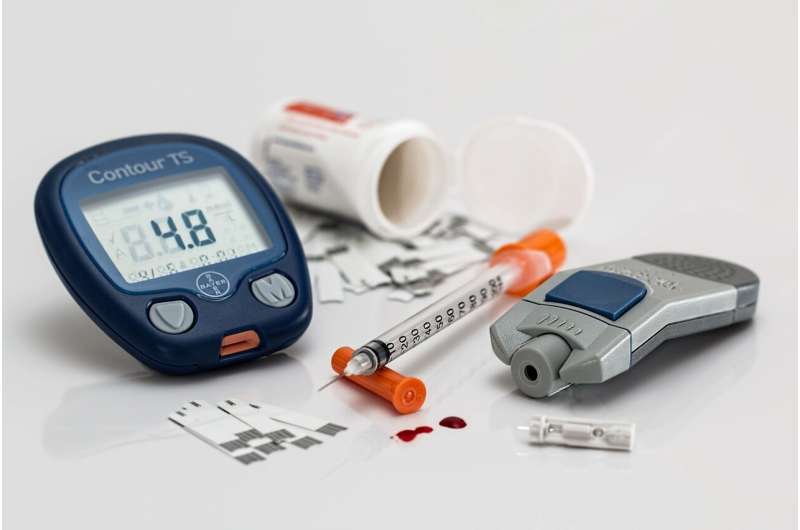This article has been reviewed according to Science X's editorial process and policies. Editors have highlighted the following attributes while ensuring the content's credibility:
fact-checked
peer-reviewed publication
trusted source
proofread
After treatment with semaglutide, newly diagnosed type 1 diabetes patients found to need little or no insulin

Treating newly diagnosed type 1 diabetes patients with semaglutide (trade names Ozempic, Wegovy and Rybelsus) may drastically reduce or even eliminate their need for injected insulin.
Those are the remarkable findings of a small University at Buffalo study reported in the New England Journal of Medicine and published online on Sept. 6.
"Our findings from this admittedly small study are, nevertheless, so promising for newly diagnosed type 1 diabetes patients that we are now absolutely focused on pursuing a larger study for a longer period of time," says Paresh Dandona, MD, Ph.D., SUNY Distinguished Professor in the Department of Medicine, former chief of the Division of Endocrinology in the Jacobs School of Medicine and Biomedical Sciences at UB and senior author on the paper.
A total of 10 patients at UB's Clinical Research Center in the Division of Endocrinology were studied from 2020 to 2022, all of whom had been diagnosed in the past three to six months with type 1 diabetes. The mean HbA1c level (an individual's average blood sugar level over 90 days) at diagnosis was 11.7, far above the American Diabetes Association's HbA1c recommendation of 7 or below.
The patients were treated first with a low dose of semaglutide while also taking meal-time (bolus) insulin and basal (background) insulin. As the study continued, semaglutide dosing was increased while mealtime insulin was reduced in order to avoid hypoglycemia.
"Within three months, we were able to eliminate all of the mealtime insulin doses for all of the patients," says Dandona, "and within six months we were able to eliminate basal insulin in 7 of the 10 patients. This was maintained until the end of the 12-month follow-up period."
During that time, the patients' mean HbA1c fell to 5.9 at six months and 5.7 at 12 months.
Applying type 2 diabetes drugs to treat type 1 diabetes
For more than a decade, Dandona has been interested in how drugs developed for type 2 diabetes might be utilized in treating type 1 diabetes as well.
He and his colleagues were the first to study how liraglutide, another drug for type 2 diabetes, might work in patients with type 1 diabetes in a study he published in 2011.
"As we extended this work, we found that a significant proportion of such diabetics still have some insulin reserve in the beta cells of their pancreas," Dandona explains. "This reserve is most impressive at the time of diagnosis, when 50% of the capacity is still present. This allowed us to hypothesize that semaglutide, which works through stimulation of insulin secretion from the beta cell, could potentially replace mealtime insulin administration."
From the outset, the goal of the current study was to see if semaglutide treatment could be used to replace mealtime insulin, thereby reducing the insulin dosage, improving glycemic control, reducing the HbA1c and eliminating potentially dangerous swings in blood sugar and hypoglycemia.
The most common side effects for patients were nausea and vomiting as well as appetite suppression, which led a number of patients to experience weight loss, an outcome that Dandona says is generally an advantage since 50% of patients with type 1 diabetes in the U.S. are overweight or obese.
"As we proceeded with the study, we found that even the dose of basal insulin could be reduced or eliminated altogether in a majority of these patients," he says. "We were definitely surprised by our findings and also quite excited. If these findings are borne out in larger studies over extended follow-up periods, it could possibly be the most dramatic change in treating type 1 diabetes since the discovery of insulin in 1921."
More information: Semaglutide in Early Type 1 Diabetes, New England Journal of Medicine (2023). www.nejm.org/doi/full/10.1056/NEJMc2302677



















